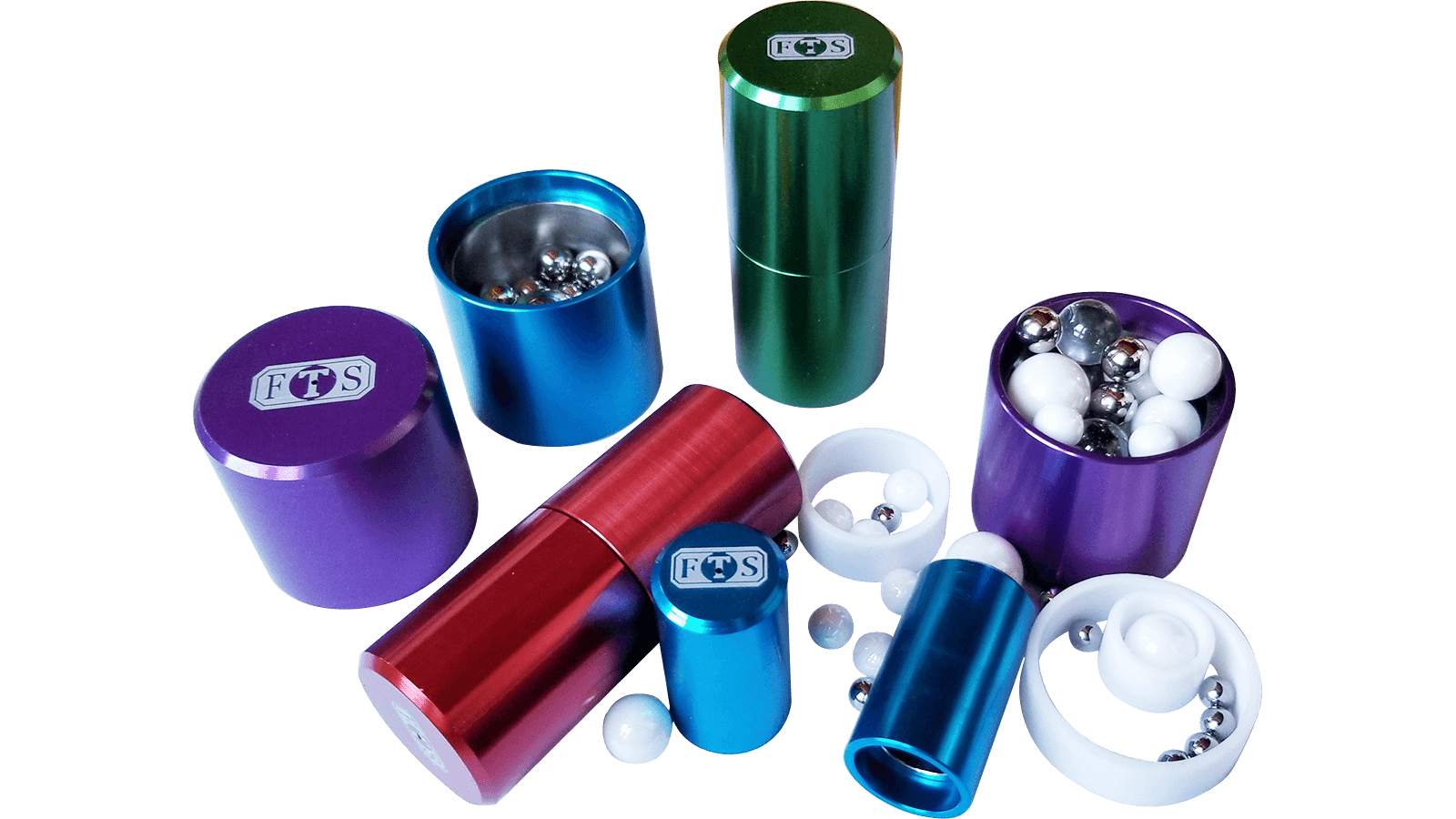Overview
Selecting the correct grinding jar for your application is essential to achieving the best possible result. Choose from a number of different sizes and materials to ensure the right fit for your application. SmartSnapTM jars feature a unique, patented, close and seal design. This means that they are easy to use and provide a hermetic seal, making them perfect for dry, wet, or air sensitive grinding.
✓ Light weight - A composite design featuring an anodized aluminum sleeve minimizes weight.
✓ Easy to open - A push top design makes these jars easy to open an close.
✓ Colour coded - No more picking up every jar to find the right one. All jars are colour coded by material, making them easy to differentiate at a glance.
✓ Easy to clean - Eliminating unnecessary crevices means less places for material to get caught.
✓ Maximum compatibility - Compatible with FTS-1000, Retsch MM 200, MM 400, and Spex 8000M, 8000D mixer mills.
✓ Jars seal hermetically - The patented SmartSnapTM close and seal design is ergonomic and provides an airtight leak proof seal.
| Available sizes | Use for | |
|
Stainless steel (Blue) |
5, 15, 30 ml | General milling - Stainless steel is a great choice for a wide range of applications. It has good wear resistance, impact force, and is affordable. Avoid use with corrosive material. |
| PTFE (Green) | 5, 15, 30 ml | Iron free milling of soft materials - If iron free milling is required but high impact force is not, PTFE is the right choice. It may be important to consider iron free milling if working with biological systems. PTFE has excellent chemical resistance to a wide range of organic solvents, acids, and bases. |
| Zirconia (Red) | 5, 15, 30 ml | Iron free milling of hard materials If both iron free mill and high impact force are required, zirconia is the best choice. Zirconia extremely hard and chemically inert. It is especially suited to catalytic and electronic applications. |
| PMMA (Clear) | 5, 15, 30 ml | In-situ techniques - These jars are optically clear and used for techniques such as in-situ Ramen, IR, and X-Ray diffraction. Avoid organic solvents. |




